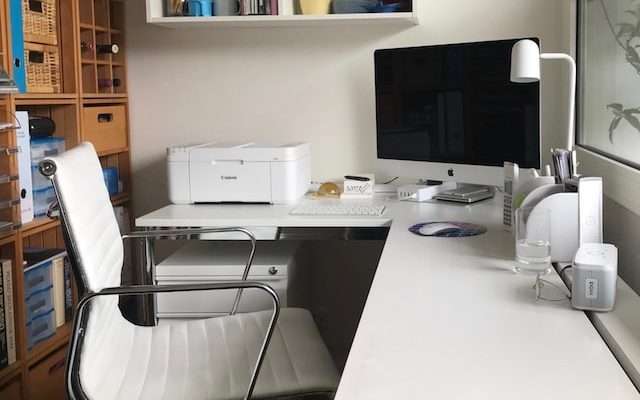
How to Prolong the Life of Your Printer
How to Prolong the Life of Your Printer
Small business owners or home office workers must have a reliable printer for daily operations. Whether you need to print documents, create marketing materials, or even just print out the occasional photo. A printer is a valuable tool that can save you time and money. However, printers are prone to wear and tear like any other technology and can experience issues over time. In this article, we’ll explore some tips and techniques for prolonging the life of your printer and keeping it running smoothly for as long as possible.
Regular Cleaning and Maintenance
One of the most important things you can do to prolong the life of your printer is to clean it regularly. Over time, dust and debris can accumulate inside the printer and on the print head. Leading to reduced print quality and potential issues with the printer itself. To clean your printer, gently wipe the exterior with a microfiber cloth. Be sure to pay extra attention to areas where dust and debris are prone to accumulating. Such as; the control panel and any vents or openings.
Next, you’ll want to focus on the interior of the printer. Depending on your specific model, you can access the interior by opening a panel or removing a tray. Use a microfiber cloth to gently wipe down the inside of the printer. Paying particular attention to the print head and other moving parts. Avoid harsh chemicals or cleaning solutions, as these can damage the printer’s components.
Proper Usage
In addition to regular cleaning and maintenance, it’s important to use your printer according to the manufacturer’s guidelines. This includes using the correct type of paper and avoiding printing on inappropriate media, such as cardstock or too-thick envelopes. Overloading the printer with too many sheets of paper at a time can also cause issues, so be sure to follow the recommended maximum paper capacity for your specific model.
Another important aspect of proper printer usage is avoiding overuse or improper usage. While it’s tempting to push your printer to the limit, quickly printing large volumes of documents can strain the printer and lead to issues over time.
Protecting The Printer From Damage
Another way to prolong the life of your printer is to protect it from physical damage. This includes handling the printer gently and carefully to avoid drops or spills and keeping it away from water and other liquids.
To protect your printer from physical damage, handle it carefully when moving or transporting it. Avoid rough handling or stacking heavy objects on top of it. It’s also a good idea to keep the printer on a stable, level surface to reduce the risk of it tipping over or falling.
In addition to handling the printer carefully, it’s important to protect it from electrical surges and power outages. This can be done using a surge protector or an uninterruptible power supply (UPS) to protect your printer and other electronic devices from fluctuations. A surge protector or UPS will help to safeguard your printer from damage caused by power surges and power outages, and it can also help to prevent data loss.
Upgrading And Replacing Parts
As your printer ages, upgrading or replacing certain parts may be necessary to extend its life. This includes replacing worn or broken parts and upgrading to newer or more advanced components.
To determine when a part needs to be replaced, pay attention to any warning signs or error messages that your printer may display. For example, if you notice streaks or smudges on your prints, this could indicate that the print head or roller assembly needs to be replaced. Similarly, if you see error messages related to the ink or toner cartridges, this could mean that the cartridges are running low or need to be replaced.
When upgrading or replacing parts, it’s important to use compatible components designed for your particular printer model. Using incompatible parts can cause problems such as poor print quality, ink leakage, or even damage to the printer itself. It’s important to follow the manufacturer’s instructions and use caution to avoid damaging the printer. If you need more time to perform the repair yourself, you can always seek the help of a professional technician.
Troubleshooting and Repair
Despite your best efforts to maintain and care for your printer, issues will inevitably arise from time to time. Some common issues that you may encounter include the following:
Poor print quality: This can be caused by low ink or toner levels, a clogged print head, or even a damaged cartridge.
Paper jams: These can be caused by several factors, including using inappropriate paper, overloading the printer with too many sheets, or a malfunctioning paper tray.
Error messages: These can be caused by several issues, including low ink or toner levels, a damaged cartridge, or a malfunctioning component within the printer.
When you encounter any of these issues, it’s important to troubleshoot and address them as quickly as possible. The first step is to consult the printer manual or check the manufacturer’s website for troubleshooting tips. You can resolve the issue by following a series of simple steps.
If the issue persists or you cannot troubleshoot it, you may need professional repair services. Finding a reputable printer repair service that is familiar with your specific printer model is important. They can diagnose the issue and determine the best action to take.
In some cases, repairing the printer may be more than replacing it. If this is the case, investing in a new printer may be more cost-effective than continuing to pour money into repairs.
Conclusion
Maintaining and prolonging the life of your printer is essential for ensuring that it runs smoothly and efficiently. By regularly cleaning and maintaining the printer, using it according to the manufacturer’s guidelines, and troubleshooting and repairing issues as they arise, you can extend the lifespan of your printer and save money in the long run.














